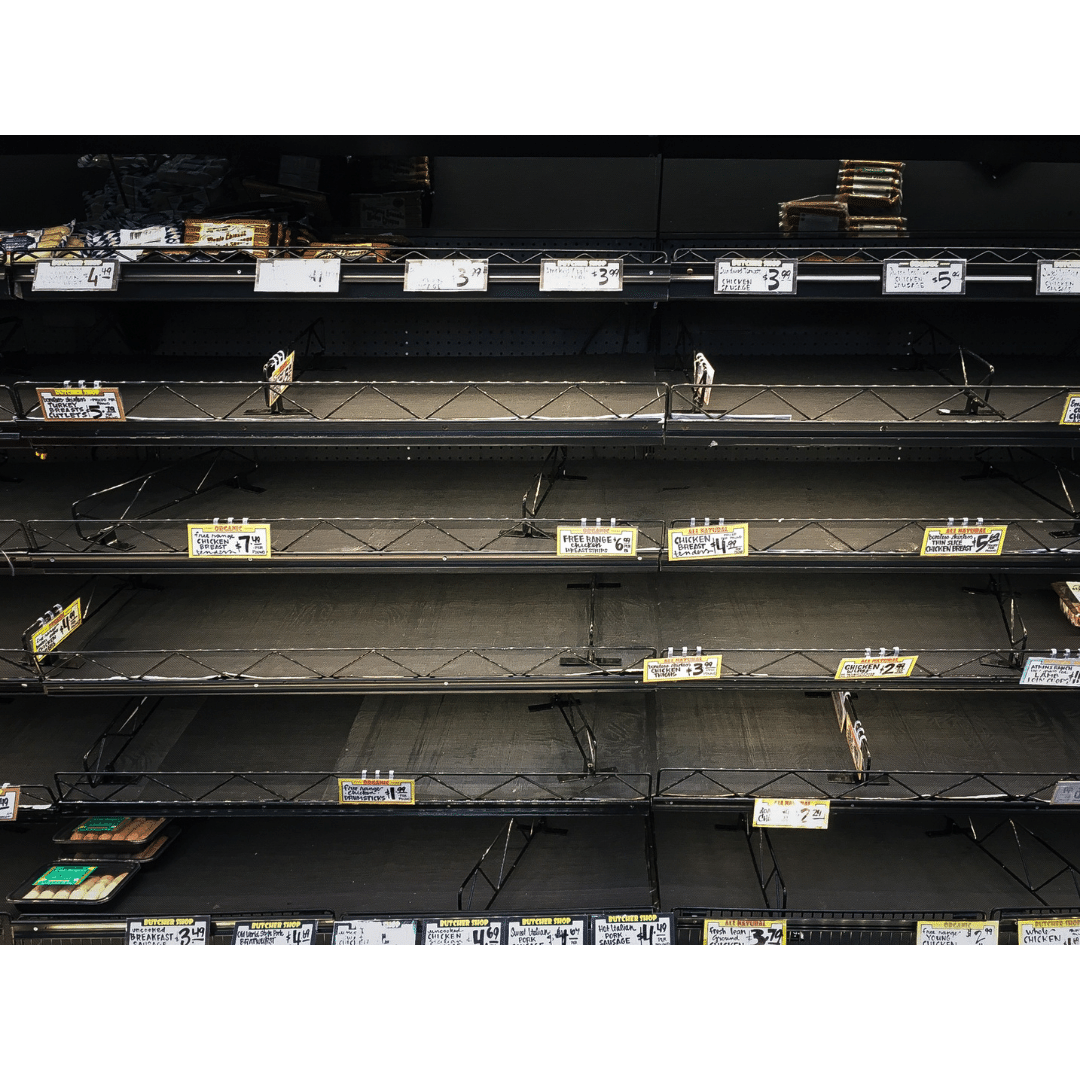One of the many factors contributing to the high inflation rate, which remains above 5%, is the supply-chain bottleneck. These supply delays are not only contributing to inflation right now but could dampen this holiday season and maintain high inflation into next year. Here's what you need to know.
Supply-Chain Bottlenecks Contribute To Current Inflation
Everyone is experiencing the effects of inflation, from declining wages to supply shortages. Inflation is being fed by several converging factors, one of them being a lag in the supply chain. When economies around the world stopped (or drastically slowed down) at the onset of the pandemic, production and distribution of goods did as well. A decrease in consumer demand led to decreased or canceled orders in nearly every sector.
As the economy began opening up again, consumer demand increased rapidly, as did business orders. Because the supply chain was suppressed during the height of the pandemic, demand could not be met and is still not met, which has greatly contributed to soaring inflation.
In its October World Economic Report, the International Monetary Fund (IMF) indicated that supply chain disruption is one of the main factors contributing to rising and sustaining inflation. In one section, the report states, "Analysis of the Baltic Dry Index—an index of expenditures related to international shipping—suggests that the bulk of its rise over the past few months has been due to supply factors." Inflation is occurring around the world, not just in the U.S.
Supply-Chain Bottlenecks Could Dampen This Holiday Season
This 2021 holiday season may be more difficult for consumers and businesses as a result of supply delays. The American Apparel & Footwear Association (AAFA), which represents over 1,000 companies such as Big 5 Sporting Goods, Carhartt, GAP, Macy's, and more, is warning consumers and lawmakers about a thin holiday season due to the supply chain "crisis."
Monday, AAFA President and CEO, Steve Lamar, sent a letter to the U.S. Department of Transportation. In this letter, Lamar states that the shipping crisis is "an existential threat to not only American retailers but American farmers and manufacturers." Lamar went on to write that if nothing substantial is done to address the shipping bottleneck, "this holiday season will be marked by empty shelves, inflation, and lost jobs..."
Mr. Lamar pointed out several factors that are currently contributing to the bottlenecking of the supply chain as well as inflation. These factors include the following:
- Shipping container rates have increased 10x since last year– sometimes even surpassing the value of the cargo inside the container.
- Shipping containers are routinely being left in the port of origin, even after shipping payment is received.
- Ships face increasing delays at U.S. ports (especially the port of Los Angeles) with some waiting 10 days or more before they can off-load their cargo.
- Goods then face significant delays in the port of entry, which is being exacerbated by the lack of dock workers, available trucks, and truck drivers.
Mr. Lamar urged the DOT to bring "all stakeholders to the table immediately" to find at least short-term solutions to the "shipping crisis."
Supply-Chain Bottlenecks Will Maintain Inflation Into Next Year
The IMF's October World Economic Report forecasted that inflation would continue into 2022 for "advanced economies" like the U.S., and even into 2023 and 2024 for developing economies. The report states, "Pandemic-induced supply-demand mismatches could persist longer than expected, leading to sustained price pressures and rising inflation expectations." The good news is, prices should stabilize by the end of 2022.
According to a survey of 67 economists conducted by the Wall Street Journal, inflation will likely remain above 5% through the rest of the year. If that holds true, it will be the longest inflation remained above 5% in the last 30 years. 33% of the economists surveyed believe supply chain delays will begin reversing in Q2 of 2022, 26% believe it will occur in Q3 of 2022, and 33% believe it will be in Q4 of 2022 or after.
Over half of the economists report that supply-chain bottlenecks are the biggest threat to our economic recovery. Other factors that also stand in the way of economic growth include labor shortages, further spread of the pandemic, and people's reactions to the pandemic. Leo Feler, the senior economist at UCLA, stated “Fundamentally, it’s Covid and people’s reaction to it that’s leading to labor shortages and supply-chain bottlenecks, which in turn is feeding into higher inflation.”
How Supply-Chain Bottlenecks Impact Everyone
Everyone is feeling the inflationary pressure caused, at least in large part, by supply-chain delays. The IMF report and other economists expect this pressure to continue into 2022. The AAFA points out that this holiday season could be defined by empty shelves–and job loss–as a result of supply shortages.
Inflation is eating into workers' expendable income and thus preventing them from making more purchases during the Holidays approach. At the same time, supply delays are cutting into businesses' inventory, preventing them from keeping up with consumer demand, which is resulting in loss of profit. President Biden enabled the port of Los Angeles to remain open 24/7 to help ease the pressure, but more solutions are required to solve the whole issue.
📌 Want more government news and business funding options every single week? Try Skip Plus for 2 weeks for free and never miss out on another major funding opportunity or government insight.


